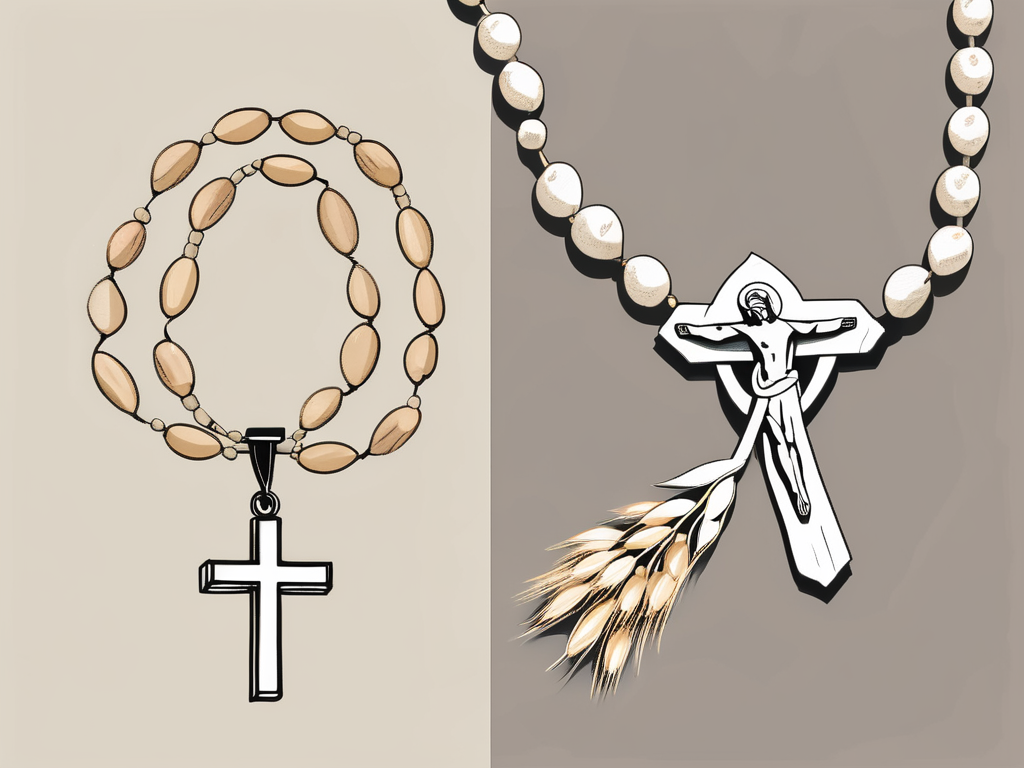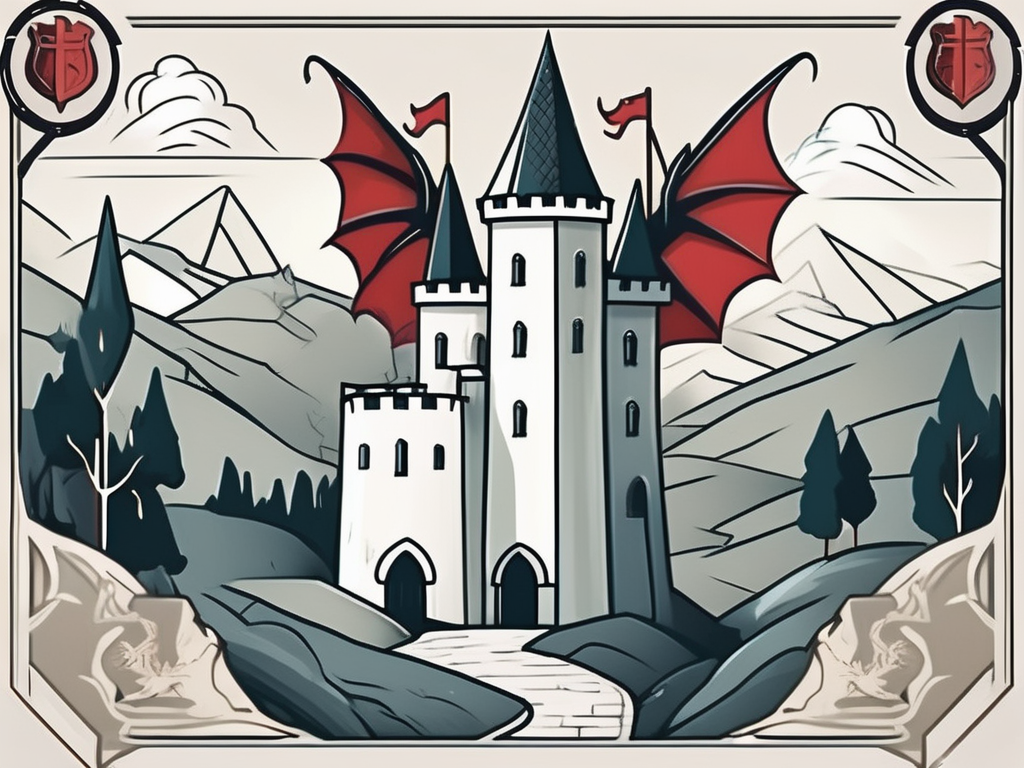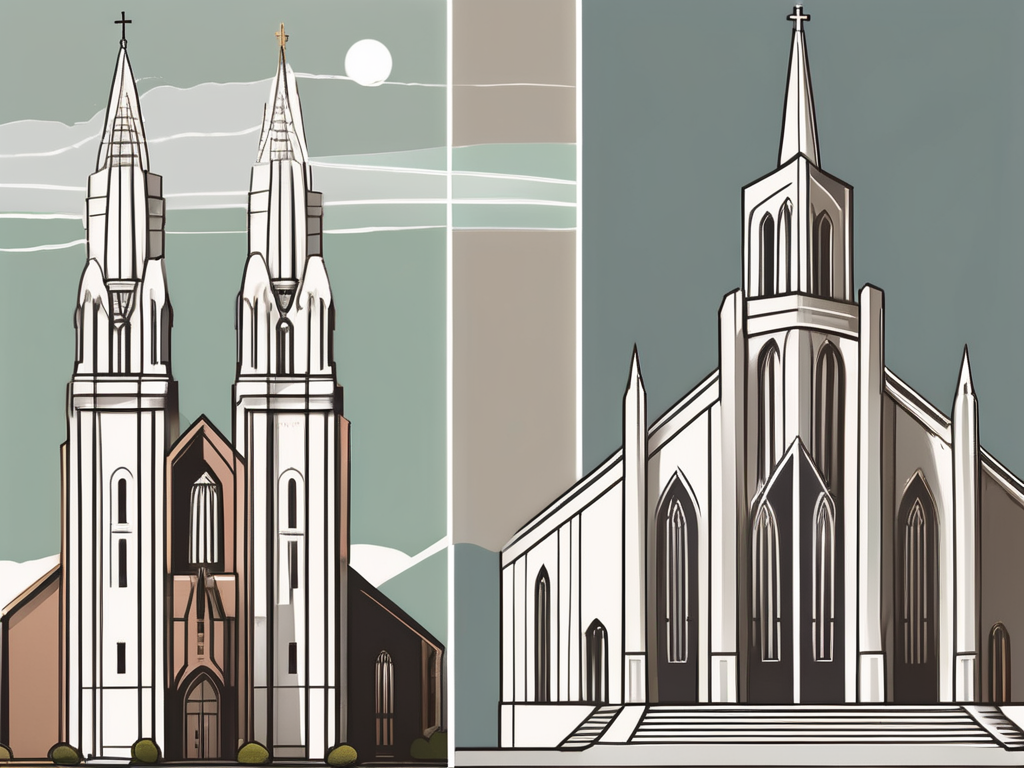Quakers and Catholics are two religious groups with distinct beliefs and practices. To better understand their differences, let’s delve into the basics of each tradition and explore their origin and historical background.
Understanding the Basics: Quakers and Catholics
Quakers, also known as the Religious Society of Friends, emerged in England during the 17th century. Influenced by the teachings of George Fox, Quakers emphasize a direct relationship with God and reject hierarchical structures. On the other hand, Catholics form one of the largest Christian denominations worldwide, tracing their roots back to the teachings of Jesus Christ and the establishment of the Church by his apostles.
Origin and Historical Background of Quakers
Quakers originated from a time of great societal and religious turmoil. Dissatisfied with the Anglican Church and other Protestant sects, George Fox and his followers sought a more personal and direct spiritual experience. The Friends emphasized equality among believers, rejecting the use of sacraments, rituals, and clergy hierarchy in favor of seeking unity through silent worship and divine guidance.
During the 17th century, England was undergoing significant political and religious changes. The country was divided between the Anglican Church, which was the established church, and various dissenting groups that sought religious freedom and a more authentic spiritual experience. It was in this context that George Fox, a young man from a humble background, began to question the religious practices of his time and sought a more direct connection with God.
Fox’s spiritual journey led him to reject the notion that one needed an intermediary, such as a priest or a bishop, to connect with God. He believed that every individual had the capacity to experience divine revelation and guidance directly. This belief in the “inner light” became a central tenet of Quakerism.
The early Quakers faced significant persecution for their beliefs and practices. They were seen as a threat to the established religious order and were often imprisoned or subjected to harsh punishments. Despite this, the movement continued to grow, attracting individuals from various social backgrounds who were drawn to its emphasis on equality and simplicity.
Origin and Historical Background of Catholics
Catholicism traces its roots to the apostle Peter, whom Jesus designated as the foundation of his Church. With the spread of Christianity throughout the Roman Empire, Catholicism became the dominant form of Christianity. Over the centuries, the Catholic Church has developed complex liturgical practices, sacraments, and a hierarchical structure led by the Pope, bishops, and priests.
The early history of Catholicism is intertwined with the life and teachings of Jesus Christ. According to Catholic tradition, Jesus appointed Peter as the leader of his disciples, giving him the authority to govern the Church. This belief in the primacy of Peter and his successors forms the basis of the papal authority within Catholicism.
Following the death and resurrection of Jesus, his disciples spread his teachings throughout the Roman Empire. As Christianity gained followers, it faced persecution from the Roman authorities who saw it as a threat to their power. Despite this opposition, the early Christians remained steadfast in their faith and continued to spread the message of Jesus.
With the conversion of Emperor Constantine to Christianity in the 4th century, the status of Christianity changed dramatically. It went from being a persecuted minority to becoming the official religion of the Roman Empire. This shift in status allowed the Church to grow and develop its theological and liturgical traditions.
Over the centuries, the Catholic Church played a central role in the shaping of Western civilization. It was a major patron of the arts, commissioning magnificent cathedrals, sculptures, and paintings. It also played a significant role in education, establishing universities and schools throughout Europe.
Today, Catholicism remains a vibrant and diverse religious tradition, with millions of followers around the world. It continues to be guided by the teachings of Jesus Christ and the authority of the Pope, who is seen as the successor of Peter and the visible head of the Church.
Core Beliefs and Doctrines: A Comparative View
Examining the fundamental beliefs and doctrines of Quakers and Catholics allows us to identify similarities and differences in their religious outlooks. Understanding these beliefs can provide insight into the unique perspectives and practices of each faith.
Fundamental Beliefs of Quakers
Quakers, also known as the Religious Society of Friends, have a distinct set of fundamental beliefs that shape their religious identity. At the heart of Quakerism is the belief in the Inner Light, a divine presence within each individual that can guide their spiritual journey. This concept emphasizes the direct relationship between individuals and God, bypassing the need for intermediaries such as priests or clergy.
Peace is a core value upheld by Quakers, who are known for their commitment to non-violence and pacifism. This belief in peace extends beyond personal interactions to encompass social justice and the promotion of equality. Quakers strive to create a world free from violence and oppression, working towards a society that reflects their core values.
Another important belief among Quakers is simplicity. This principle emphasizes the importance of leading a simple and uncluttered life, free from materialism and excess. By embracing simplicity, Quakers seek to focus on what truly matters in life, fostering a deeper connection with their spirituality and the world around them.
Equality is a fundamental value that Quakers hold dear. They believe that all individuals are equal in the eyes of God, regardless of gender, race, or social status. This belief in equality extends to their religious practices, as Quakers do not have a formal clergy or hierarchy. Instead, they emphasize the importance of communal decision-making and shared responsibility.
Integrity is another core value upheld by Quakers. They strive to live their lives with honesty, authenticity, and moral uprightness. Quakers believe in the importance of aligning their actions with their beliefs, seeking to integrate their spiritual values into all aspects of their lives.
It is important to note that while Quakers share these fundamental beliefs, interpretations of Quakerism may vary among different communities. Quaker meetings may have different practices and customs, reflecting the diversity within the Quaker faith.
Fundamental Beliefs of Catholics
Catholicism, one of the oldest Christian traditions, has a rich and complex set of fundamental beliefs that guide the faith and practices of its followers. Catholics adhere to the belief in the Holy Trinity, which states that there is one God who exists in three distinct persons: the Father, the Son (Jesus Christ), and the Holy Spirit. This belief in the Trinity is central to Catholic theology and forms the foundation of their understanding of God’s nature.
Another fundamental belief of Catholics is the divinity of Jesus Christ. Catholics believe that Jesus is the Son of God who took on human form to redeem humanity from sin. This belief in the divinity of Jesus is closely tied to the concept of salvation, as Catholics believe that through Jesus’ sacrifice on the cross, humanity can be reconciled with God and attain eternal life.
The authority of the Church is also a key belief in Catholicism. Catholics believe that the Church, guided by the Holy Spirit, has the authority to interpret and teach the Word of God. This authority is vested in the Pope, who is considered the successor of Saint Peter and the visible head of the Church. The teachings of the Church, as guided by the Pope and the bishops, are seen as authoritative and binding for Catholics.
The Sacraments hold central importance in Catholic theology. These sacred rituals, such as Baptism, Eucharist, and Confession, are believed to convey God’s grace and play a vital role in the spiritual life of Catholics. The Eucharist, in particular, is considered the source and summit of the Catholic faith, as it commemorates the Last Supper and the real presence of Jesus in the bread and wine.
Catholics also venerate saints, who are seen as holy men and women who have lived exemplary lives of faith. Saints serve as role models and intercessors, and Catholics often seek their prayers and guidance. The veneration of saints is deeply rooted in Catholic tradition and is seen as a way to connect with the communion of saints, the spiritual bond between the living and the deceased.
Furthermore, Catholics rely on the interpretation of the Bible and Sacred Tradition as guided by the Magisterium of the Church. Sacred Tradition refers to the teachings and practices passed down through the generations, while the Magisterium is the teaching authority of the Church. Catholics believe that the Bible and Sacred Tradition are both sources of divine revelation, and the Magisterium ensures the correct interpretation and understanding of these sources.
These fundamental beliefs and doctrines provide a framework for Catholic theology and worship, shaping the religious practices and rituals of Catholics around the world. While there may be variations in certain customs and traditions among different Catholic communities, these core beliefs remain central to the faith.
Worship Practices and Rituals: A Side-by-Side Comparison
Differences in worship practices and rituals between Quakers and Catholics further distinguish their religious experiences.
Quaker Worship Practices and Rituals
Quaker worship takes place in a simple meetinghouse or any space where Friends gather. Silent worship serves as the centerpiece, with individuals sitting in silence, listening for messages and promptings from the Inner Light. If someone feels compelled to speak, they stand and offer a message or prayer to the group.
During Quaker worship, the atmosphere is one of tranquility and contemplation. The absence of formal rituals and structured prayers allows for a more personal and direct connection with the divine. Quakers believe that everyone has the ability to experience the presence of God within themselves, and this belief is reflected in their worship practices.
As the silence envelops the meetinghouse, the participants engage in deep introspection, seeking spiritual guidance and inspiration. The stillness is punctuated only by the occasional spoken message, which is shared spontaneously and without premeditation. This unique form of worship fosters a sense of equality among the worshippers, as each person’s voice is given equal weight and importance.
Catholic Worship Practices and Rituals
Catholics participate in formal liturgical services held in churches or cathedrals. These services often involve structured prayers, scripture readings, hymns, and the celebration of the Sacraments. The Mass, the highest form of Catholic worship, includes the Liturgy of the Word and the Liturgy of the Eucharist.
In Catholic worship, the emphasis is on the communal aspect of faith. The congregation gathers together to worship as a unified body, guided by the priest. The rituals and traditions of the Catholic Church provide a sense of continuity and connection to the historical roots of Christianity.
During a Catholic Mass, the faithful engage in a series of prescribed actions and responses. The Liturgy of the Word involves the reading of scripture passages, followed by a sermon or homily that provides spiritual guidance and interpretation. The Liturgy of the Eucharist centers around the consecration of bread and wine, which Catholics believe becomes the body and blood of Christ.
The use of symbols and sacraments in Catholic worship serves to deepen the worshippers’ understanding and experience of the divine. The rituals, such as the sign of the cross, the sprinkling of holy water, and the lighting of candles, create a sensory and visual connection to the spiritual realm.
Overall, Catholic worship is characterized by its rich symbolism, formal structure, and reverence for tradition. The rituals and practices provide a framework for the faithful to express their devotion and engage in a collective act of worship.
The Role of Clergy in Quaker and Catholic Churches
Understanding the roles of clergy in both Quaker and Catholic traditions sheds light on how leadership and authority are perceived within each faith community.
Clergy in Quakerism
Quakers reject the formal distinctions between laity and clergy. Instead, they believe in the concept of the Priesthood of all Believers, where each individual has direct access to the divine and can serve as a vessel for spiritual inspiration. Leadership roles, such as elders and clerks, are typically rotational and exist to provide guidance rather than exercise hierarchical authority.
Clergy in Catholicism
Catholicism has a well-defined hierarchical structure with the Pope as the head of the Church, followed by cardinals, bishops, and priests. Catholics view priests as mediators between God and the people, entrusted with the administration of the sacraments and pastoral care. Bishops oversee their respective dioceses, and the Pope, as the successor of Peter, holds supreme authority over matters of faith and morality.
Social Teachings and Community Involvement
Examining the social teachings and community involvement of Quakers and Catholics showcases how both traditions actively engage with societal issues.
Quaker Social Teachings and Community Involvement
Quakers have a strong commitment to social justice and peace. They advocate for nonviolence, equality, and the elimination of all forms of discrimination. Quakers actively engage in various social issues, including promoting human rights, environmental sustainability, and fostering dialogue between conflicting parties.
Catholic Social Teachings and Community Involvement
Catholicism places great emphasis on the dignity of every human life and social justice. The Catholic Church holds a comprehensive body of social teachings, covering topics such as the sanctity of life, care for the poor, solidarity, and stewardship of the environment. Catholics engage in charitable works and participate in social outreach programs guided by these teachings.
Closing Thoughts
Quakers and Catholics may have different beliefs, worship practices, and approaches to leadership, but both traditions share a deep commitment to spirituality and the pursuit of a meaningful connection with the divine. Understanding these similarities and differences helps foster a greater appreciation for the diverse religious landscape and contributes to a more inclusive and harmonious society.












